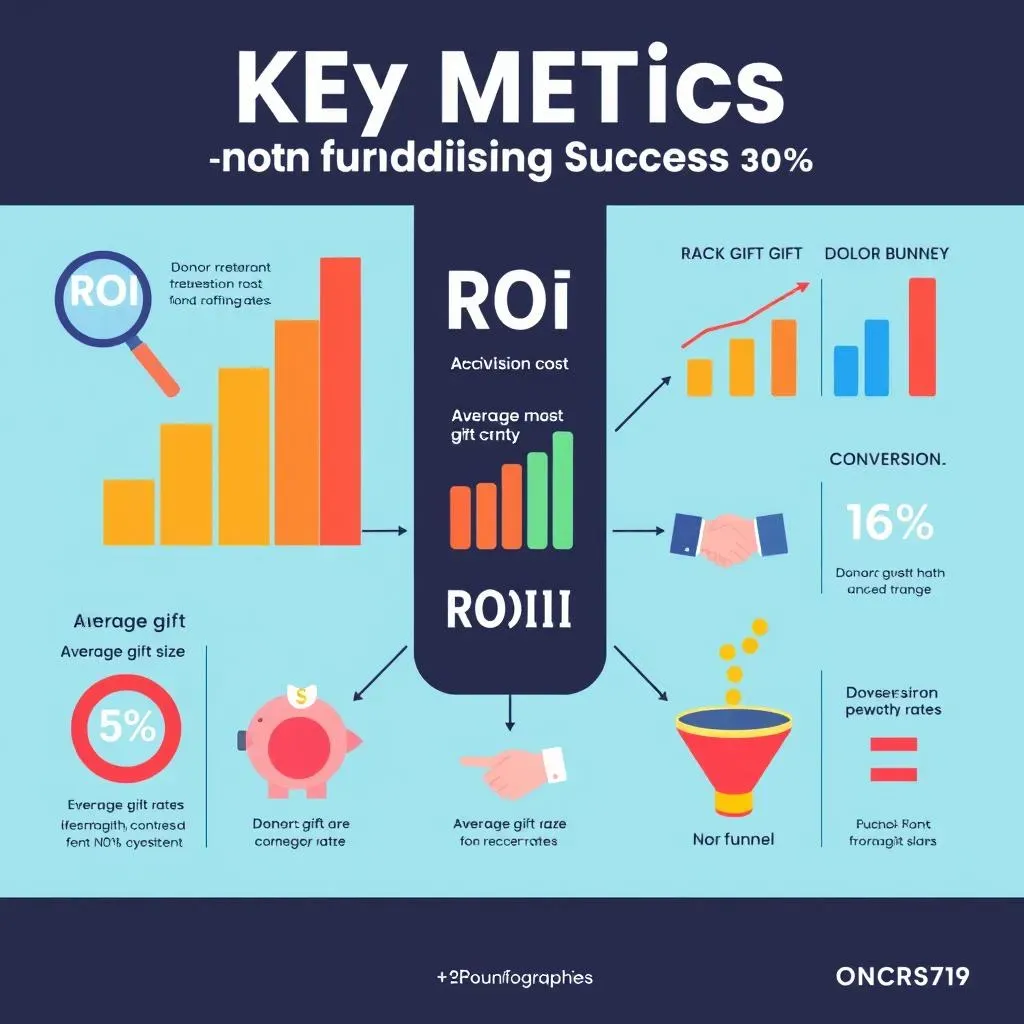Table of Contents
Running a non-profit is a marathon, not a sprint, and fundraising is the fuel that keeps you going. But how do you know if your fundraising efforts are actually working? This article is your ultimate guide to understanding "how to measure non-profit fundraising success." We'll equip you with the knowledge and tools to track your progress, identify areas for improvement, and ultimately, maximize your impact. Forget guesswork; we'll show you how to use data-driven strategies to boost your fundraising results. We'll explore essential key performance indicators (KPIs) – from donor retention rates and acquisition costs to average gift size and return on investment – providing clear explanations and practical examples. You'll learn how to analyze your data to spot trends, understand what's working, and what needs adjustment. By the end, you'll have a clear roadmap for transforming your fundraising strategy, ensuring your non-profit thrives and continues to make a meaningful difference in the world. Let's dive in and unlock the secrets to non-profit fundraising success!
Key Metrics for NonProfit Fundraising Success

Key Metrics for NonProfit Fundraising Success
So, you're diving into the world of non-profit fundraising metrics? Fantastic! It's like finally getting a map after wandering blindfolded through a fundraising jungle. The key is understanding that not all metrics are created equal. Some are high-level overviews, giving you a bird's-eye view of your overall performance. Others are more granular, helping you zoom in on specific campaigns or donor segments. Think of it like this: high-level metrics are your overall fundraising fitness level, while granular metrics are like tracking your progress on individual exercises.
Let's start with the big guns: Return on Investment (ROI) is a crucial metric. It shows you how much you're getting back for every dollar you spend. A high ROI means your fundraising strategies are efficient and effective. Then there's donor retention rate. This tells you what percentage of your donors stick with you year after year. Keeping existing donors happy is cheaper than finding new ones, so a high retention rate is a major win. And don't forget donor acquisition cost – this shows how much it costs to bring in a new donor. You want this number to be low, because every dollar you spend should go towards your mission, not just acquiring more donors. Check out our guide on donor retention strategies for more tips.
Metric | Description | Why it matters |
|---|---|---|
ROI | Return on Investment | Shows efficiency of fundraising |
Donor Retention | Percentage of returning donors | Cost-effective fundraising |
Acquisition Cost | Cost per new donor | Minimizing fundraising expenses |
Beyond these core metrics, you'll want to look at things like average gift size (how much the average donation is), donor growth rate (how many new donors you're gaining), and conversion rates (how many people who see your fundraising appeals actually donate). These metrics, along with the others, paint a complete picture of your fundraising health. Understanding them is the first step to optimizing your fundraising strategy and achieving even greater success. For more on maximizing your impact, explore our best practices guide.
- Average Gift Size
- Donor Growth Rate
- Conversion Rates
"The most important thing is to have a clear understanding of your goals and to select metrics that align with those goals. Don't try to track everything at once; start with a few key metrics and gradually add more as you become more comfortable." - Fundraising Expert
Analyzing Your NonProfit's Fundraising Data and Identifying Trends
Okay, so you've got your fundraising metrics – now what? This is where the real fun begins! Think of your data as a treasure map leading to fundraising gold. The key is to look beyond the individual numbers and start to see the bigger picture. Are there any patterns emerging? For instance, did your spring fundraising campaign outperform your summer one? Why might that be? Was it better marketing, a more compelling appeal, or perhaps a different audience? By digging into the details, you can unlock valuable insights into what works and what doesn't.
One effective technique is to visualize your data. Charts and graphs can transform complex numbers into easy-to-understand visuals. A simple line graph showing your donation revenue over time can immediately reveal trends like seasonal fluctuations or the impact of specific campaigns. Similarly, bar charts can compare the performance of different fundraising channels – did your online donations outperform your mail appeals? Don't underestimate the power of simple visuals to help you understand your data quickly and efficiently. For more on crafting compelling fundraising stories, check out our guide on effective storytelling.
Visualization Type | Best Use Case | Example |
|---|---|---|
Line Graph | Show trends over time | Donation revenue over 12 months |
Bar Chart | Compare different categories | Donations from different campaigns |
Pie Chart | Show proportions | Donation sources (online, mail, events) |
Beyond simple visualizations, consider segmenting your data. Break down your donor base by demographics (age, location, etc.) or giving history (first-time donors vs. repeat donors). This allows you to identify high-performing segments and tailor your strategies to reach them more effectively. For example, if you find that younger donors respond better to online appeals, you can allocate more resources to digital marketing. Remember, it's all about understanding *who* your donors are and *how* to best engage them. For more information on reaching a wider audience, explore our tips on social media fundraising.
- Analyze donation trends over time
- Compare performance across different fundraising channels
- Segment your donor base to identify high-performing groups
"Data is not just numbers; it's a story waiting to be told. By analyzing your fundraising data, you can discover the narrative behind your success and identify areas for growth." - Data Analytics Expert
Improving Your NonProfit's Fundraising Strategy Based on Data: How to Measure NonProfit Fundraising Success
So, you've unearthed some fascinating trends in your fundraising data. Now, the real magic happens – translating those insights into actionable changes that supercharge your fundraising strategy. Think of it as taking your fundraising from a hobby to a finely-tuned machine. This isn't about making random changes; it's about data-driven decisions that maximize your impact. For example, if your analysis reveals that younger donors respond better to online campaigns, you might shift more resources towards digital marketing, creating engaging social media content and optimizing your online donation platform. Need a hand choosing the right platform? Check out our comparison of online fundraising platforms.
- Refine your messaging based on donor segments.
- Adjust your fundraising channels based on performance.
- Optimize your online donation process for better conversion.
Let's say your data shows a dip in donations during the summer months. This might suggest a need for a seasonal fundraising campaign, perhaps focusing on a specific summer-related event or theme. Or, maybe your analysis reveals a low conversion rate on your donation page. This could indicate a need to simplify the donation process, improve the design, or even A/B test different calls to action. The key is to use your data to identify specific areas for improvement and then implement targeted strategies to address them. For more ideas on boosting your campaigns, check out our fundraising strategies for 2024.
Problem Identified | Data-Driven Solution | Example |
|---|---|---|
Low summer donations | Seasonal campaign | Summer fundraising event |
Low donation page conversion | Page redesign/A/B testing | Simpler donation form, clearer CTAs |
High acquisition cost for a specific channel | Reduce spending on that channel, reallocate to a more efficient one | Shift from print ads to social media |
Remember, measuring non-profit fundraising success isn’t a one-time event; it's an ongoing process of learning, adapting, and improving. By consistently tracking your metrics, analyzing the data, and making data-driven adjustments, you'll not only boost your fundraising results but also gain a deeper understanding of your donor base, allowing you to build stronger relationships and cultivate a more sustainable fundraising program. For inspiring success stories, read our article on non-profit fundraising success stories.
Don't be afraid to experiment! Try different approaches, track the results, and see what resonates with your donors. The beauty of data-driven fundraising is that it allows for continuous improvement. By embracing a culture of learning and adaptation, you can unlock the full potential of your fundraising efforts and make a greater impact on the world. For a deeper look at successful strategies, check out our best practices guide.
